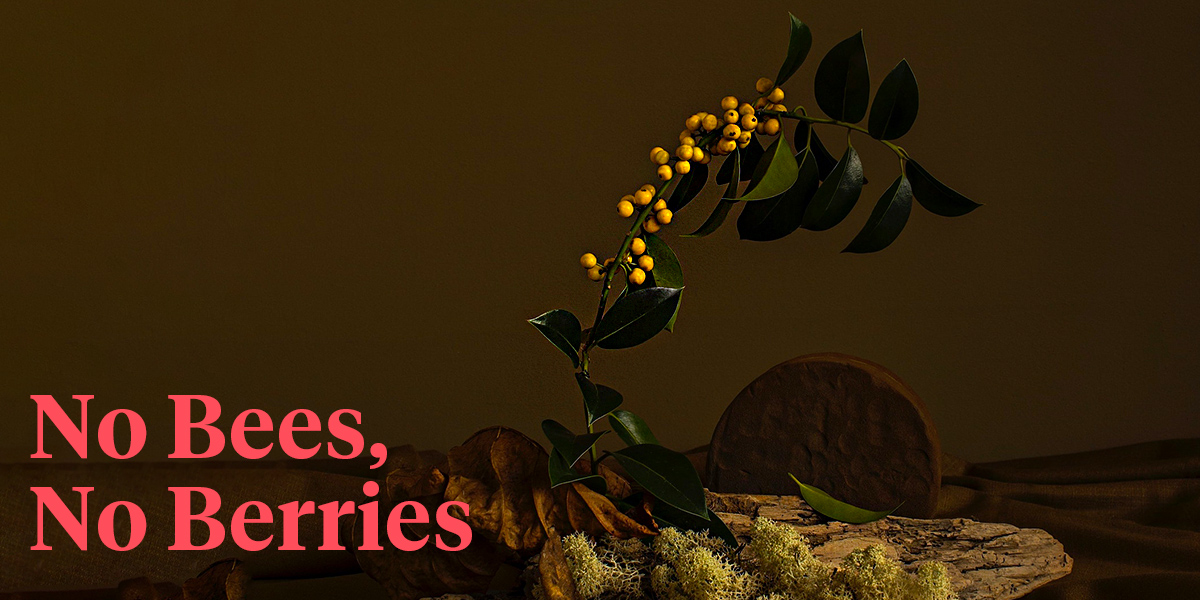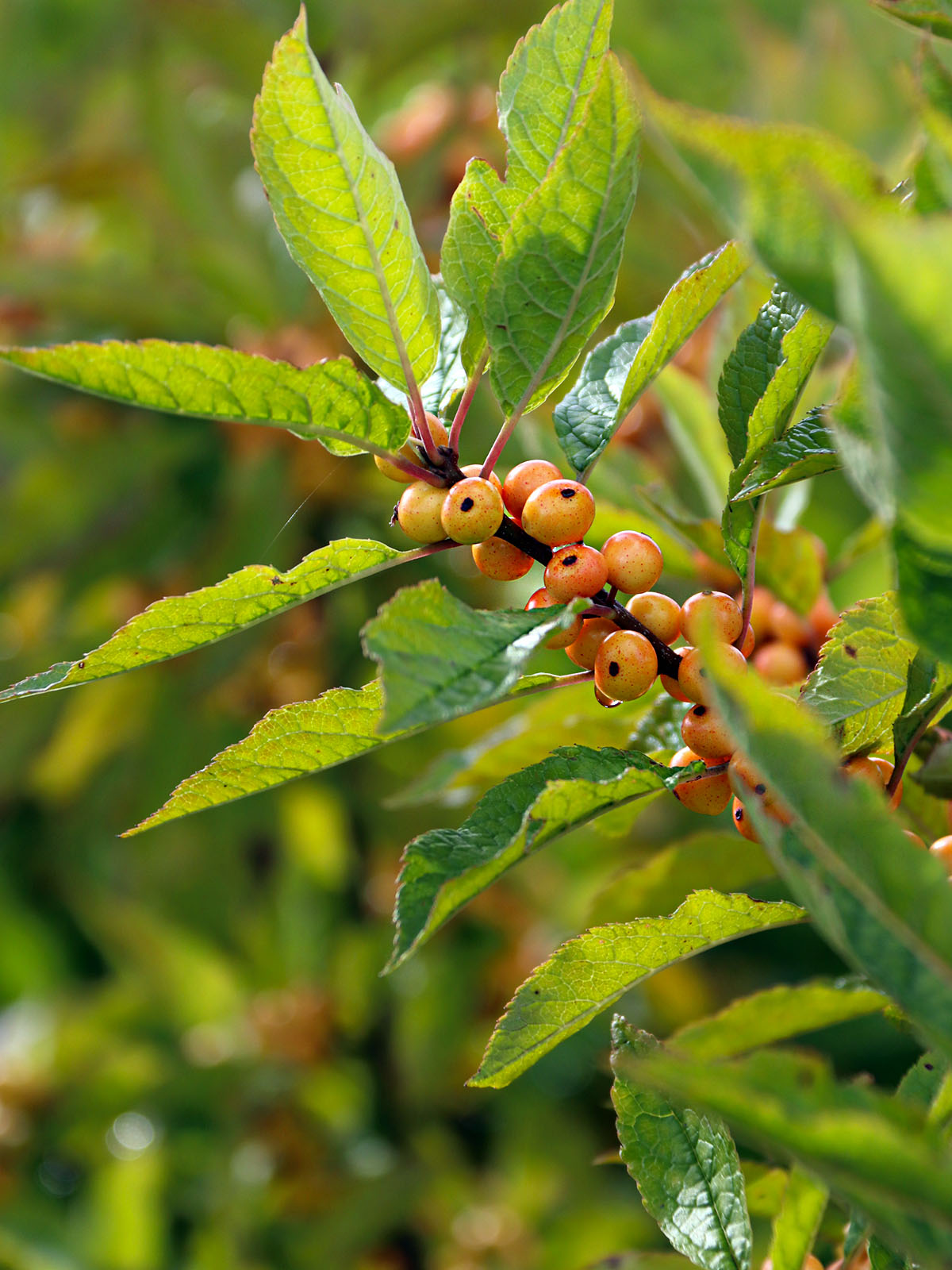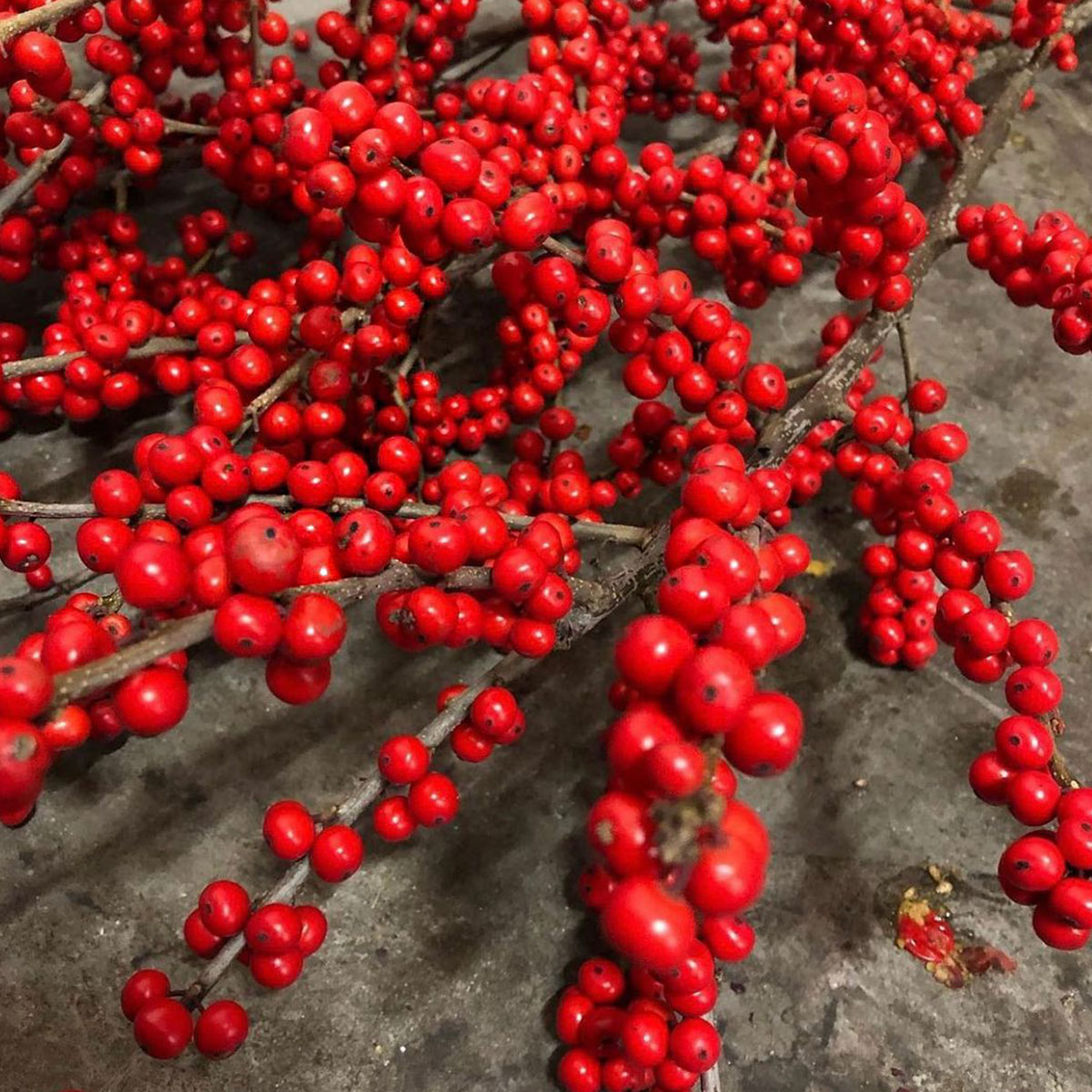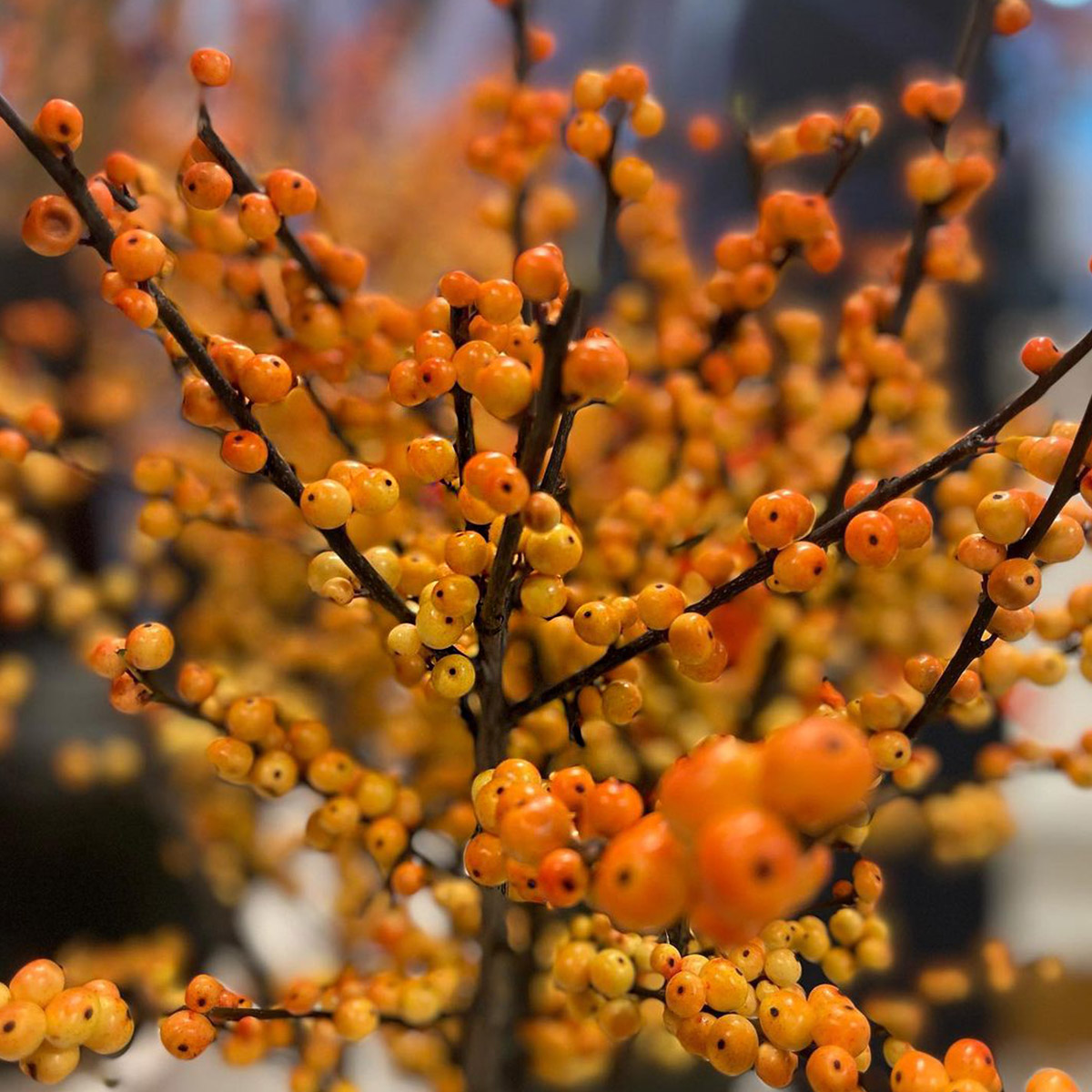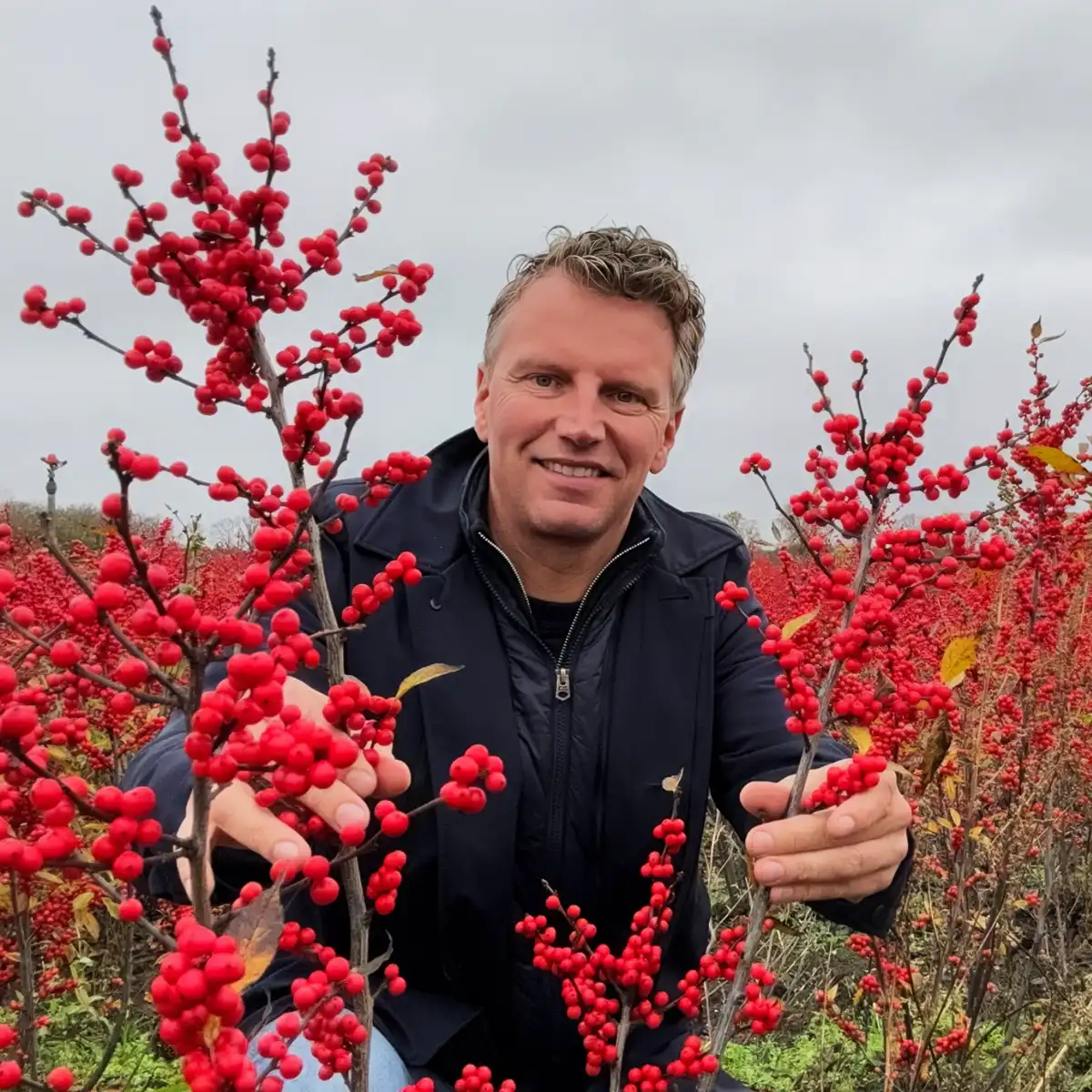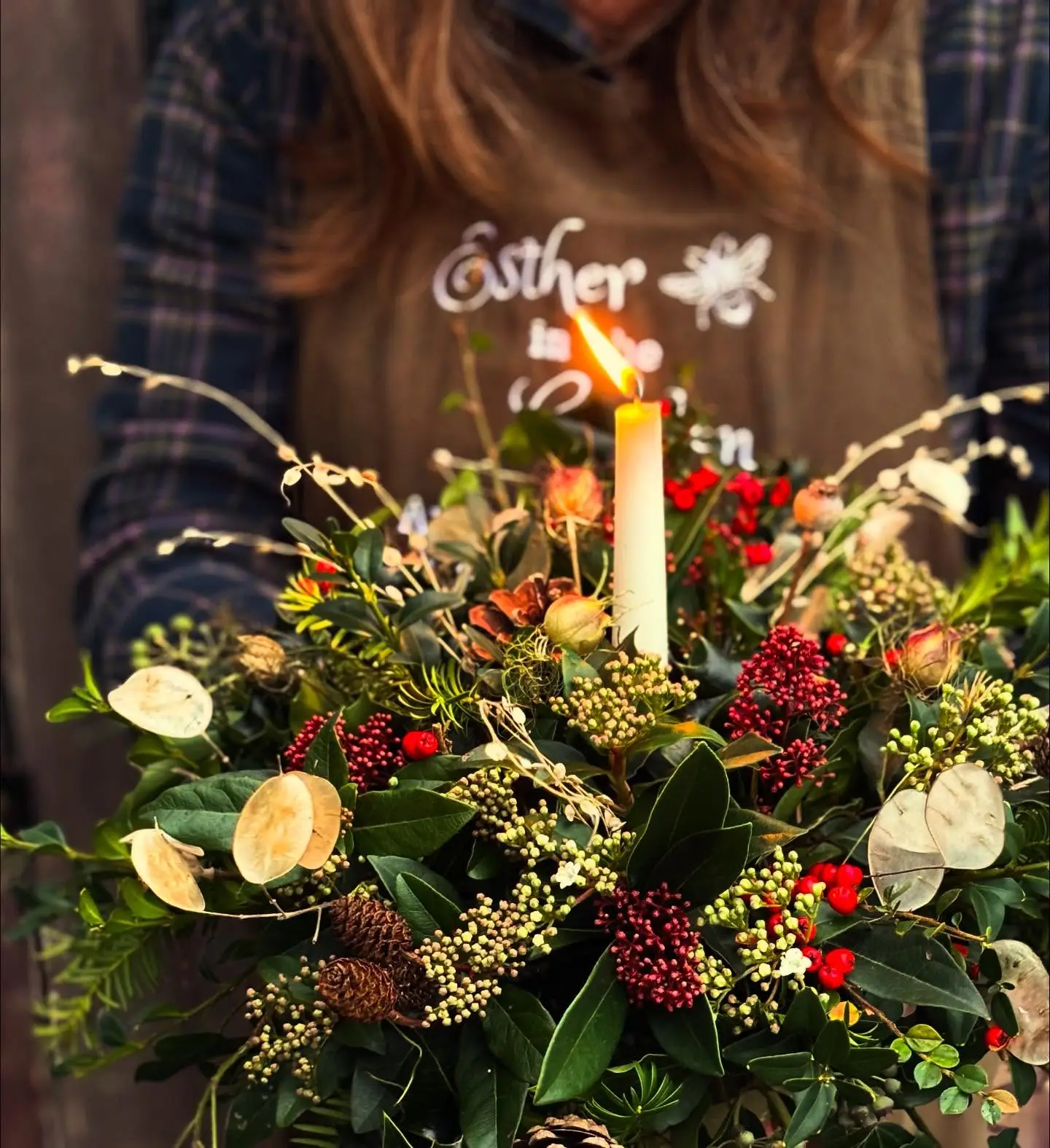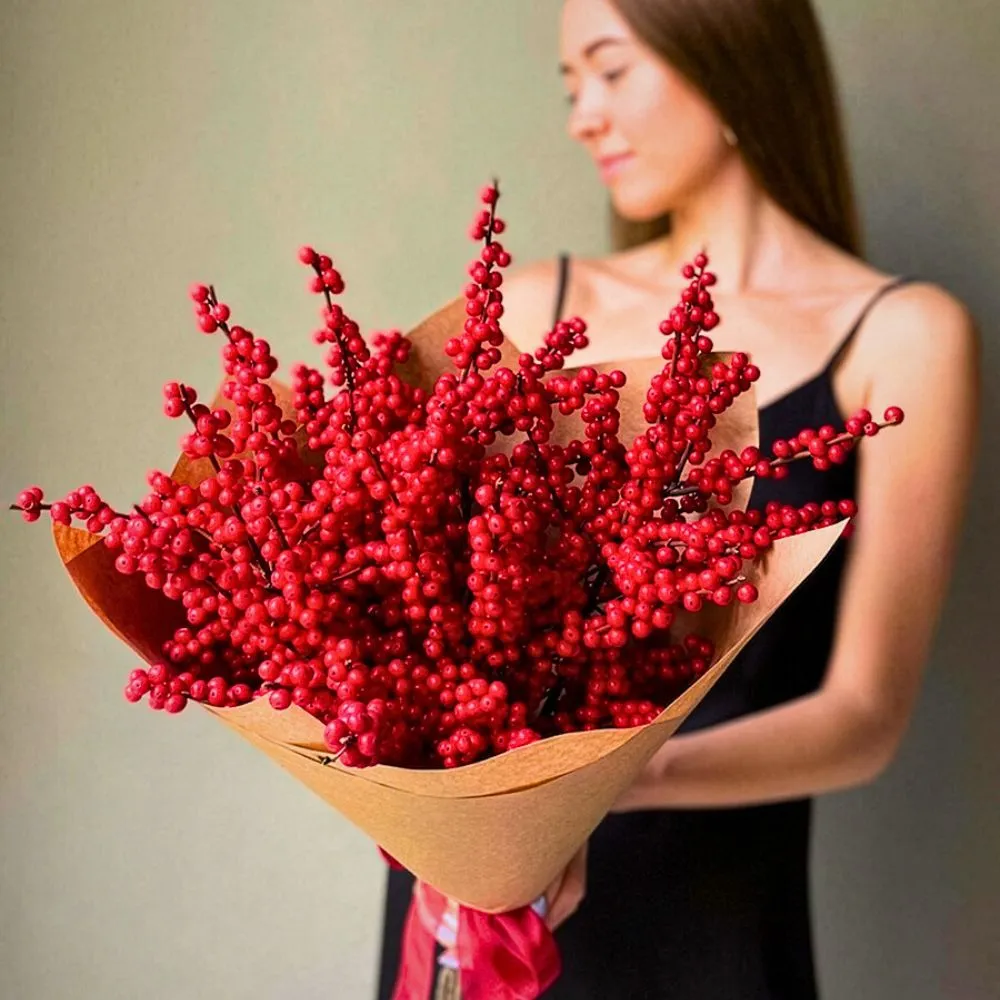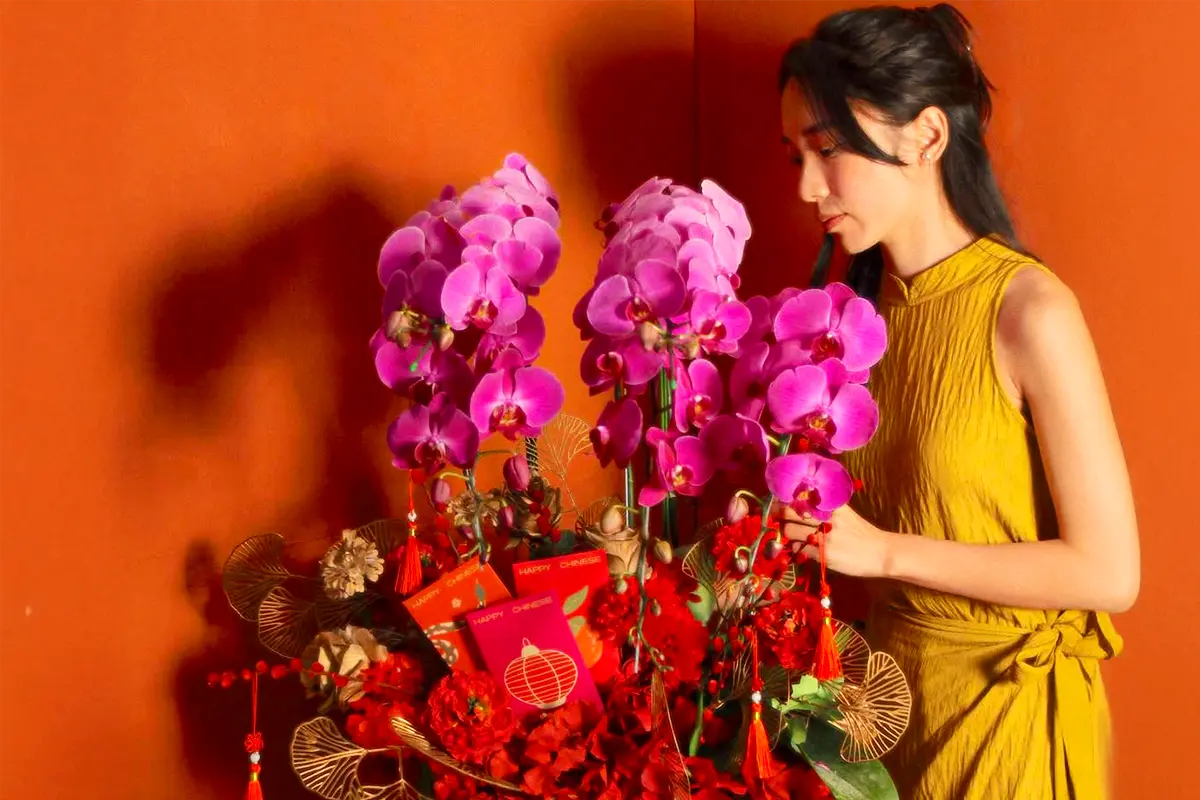Beautiful berries in yellow, orange, and red. That’s what Ilex is known for. A lot of work must be done before the berry branches can sparkle in the vase. Both growers and bees have worked their buts off before you can enjoy these richly filled berry branches. Also bees? Yes, because without bees, there’ll be no berries!
Don't Wait for Christmas to Get Ilex
Did you have your first ilex of the year already? No? Well, don't wait for Christmas, because it's about time again for these eye-catchers of the fall. Ilex is not just merely used for those typical holiday wreaths, but it has many more possibilities. And thanks to the bees, we can all So it's time to get your juices flowing with some ilex information and inspiration!

Every Berry Starts as a Flower
Growing ilex is a long-term job for both the grower and the bees. Ilex is cultivated outdoors where the cut shrubs grow in the field. The shrubs flower once every two years. The modest white flowers that appear in spring are more important than their size suggests. Each flower can grow into a colorful berry, but then it must be pollinated. And that’s what the bees do. The growers often place beehives between the shrubs so there are enough pollinators flying around. Get to work! The end result is a strong and resilient branch to decorate your fall arrangements.
Colorful Berries, Thanks to the Bees
Once the flowers have been pollinated by the bees, they grow into beautiful berries during the summer. The berry branches can be harvested in late summer and autumn. That must be done before the birds pounce on them; they love the berries! Sometimes growers put up nets over the bushes to keep the birds away. After harvesting, the leaves are removed from the branches to make the berries stand out even more. And then it’s finally time for the berries to sparkle in the vase.
Radical Wonders believes ilex is more than a Christmas favorite: there remains a world of endless possibilities still to be explored. There are about 10 colors available, from radical red to sunny orange and lemon yellow. All warm winter hues are easy to intermix and form an inviting, modern palette.
Berries, Hips & Flowers
You can expect to see the very first Ilex in late summer or autumn, depending on the weather. The classic red Ilex is really eye-catching in lavish autumn bouquets. The yellow and orange ones are no less impressive. These are beautiful in colorful bouquets that radiate the richness of autumn. Combine Ilex with colorful seasonal flowers such as Dahlias, Chrysanthemums, and Hydrangeas. Or make a berry bouquet with Ilex, Callicarpa, and Symphoricarpos. Truly autumnal!

In the Mood for Spring
Christmas is the high season for Ilex, especially the red variety. As soon as Christmas is over, many people start to look forward to springtime. It’s lovely to combine lemon-yellow Ilex with the first, fresh spring flowers, such as tulips, Ranunculus, and Anemones. With a variety in height, they create a wonderful, hand-picked bouquet with spring vibes.


